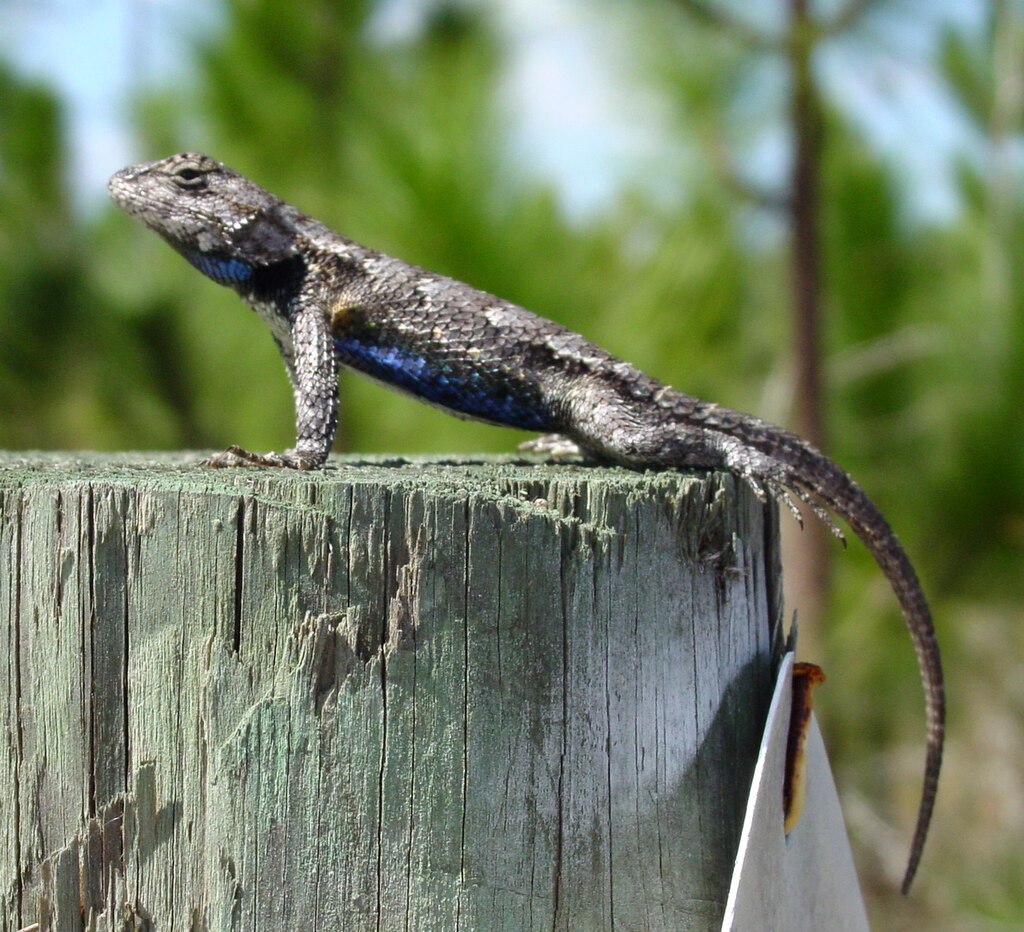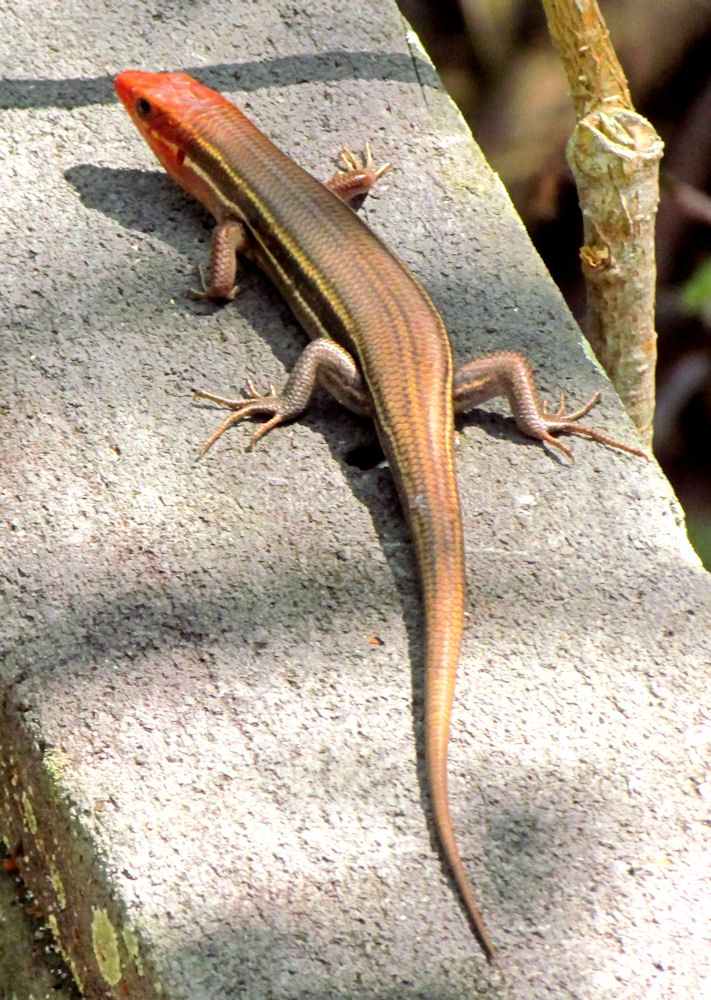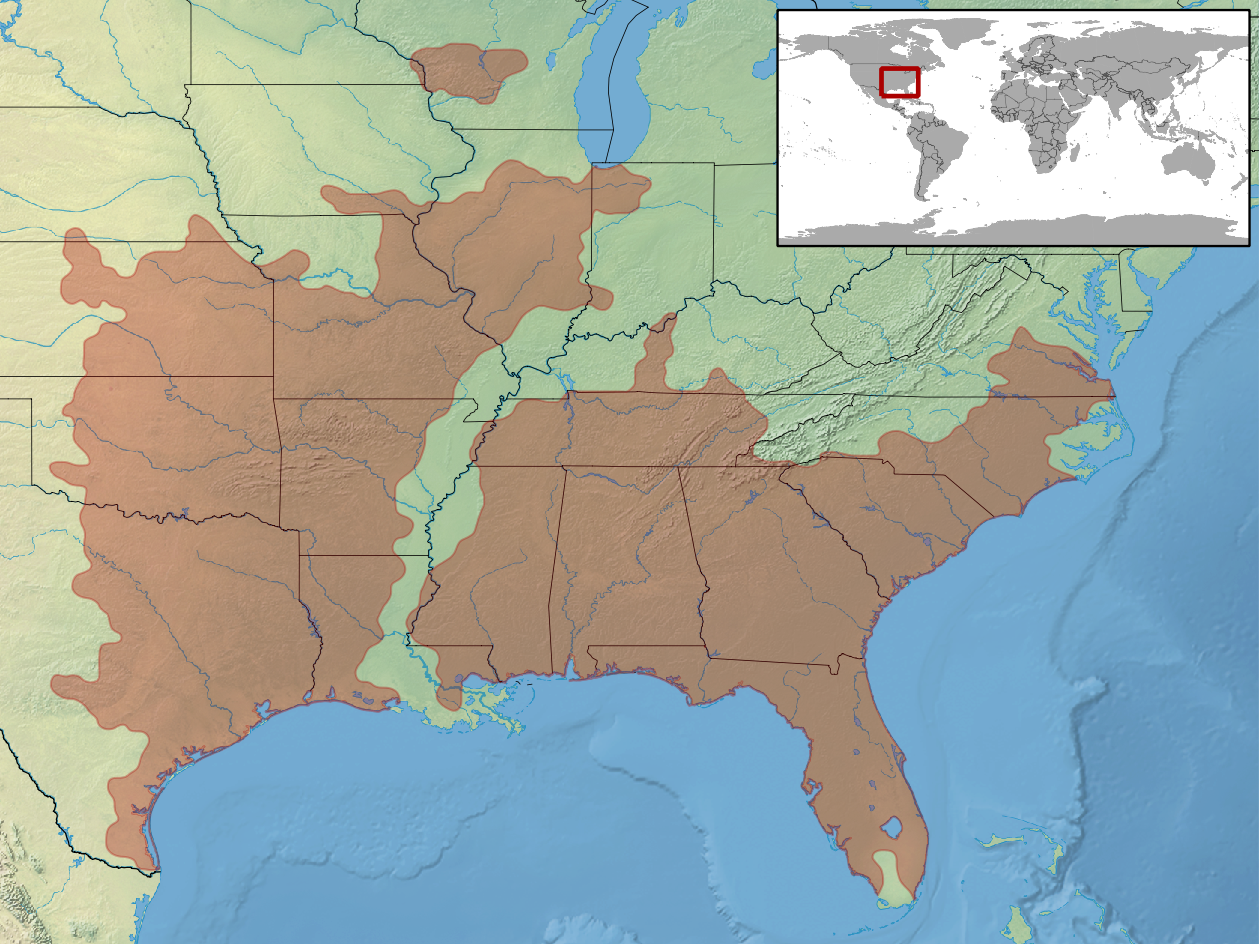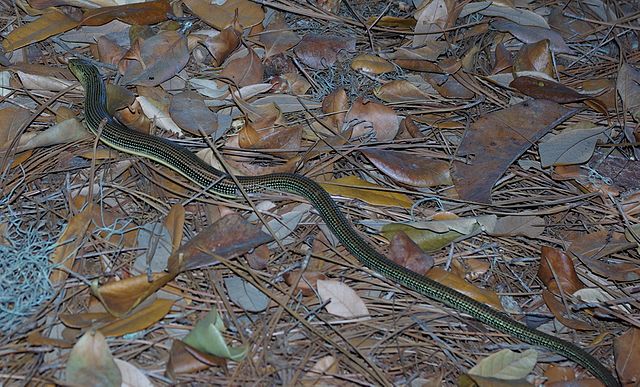Are you wondering what lizard you have in your yard in North Carolina? Are you worried it may be poisonous or aggressive? There are 13 lizards you will see in North Carolina. We have listed them below to assist you in identifying them quickly and easily.
List of Lizards Can Be Found In North Carolina
- Mediterranean house gecko
- Green anole
- Texas horned lizard
- Eastern fence lizard
- Six-lined racerunner
- Coal skink
- Five-lined skink
- Southeastern five-lined skink
- Broad-headed skink
- Little brown skink
- Slender glass lizard
- Mimic glass lizard
- Eastern glass lizard
1. Mediterranean House Gecko

Scientific name: Hemidactylus Turcicus.
Common name: Mediterranean house gecko.
The Mediterranean house gecko, or Hemidactylus turcicus, is a common gecko found throughout the world. It’s often known as the Turkish gecko.
These nocturnal geckos grow up to 5.9 inches / 15 centimeters, their eyes are lidless and their skin is tan in color with black spots. There are stripes that can be seen on the tail with a translucent belly.
These small lizards are often on their own or in small groups of up to five.
2. Green Anole

Scientific name: Anolis carolinensis.
Common name: Green anole, Carolina anole, Carolina green anole, American anole, American green anole, North American green anole, red-throated anole, American chameleon.
The green anole is native to the southeastern United States, though it has been introduced elsewhere.
This lizard is better known as the green anole with females having a white dorsal stripe.
Coloration varies from brown to green and these lizards are known for changing their color based on their stress levels, activity levels and mood.
3. Texas Horned Lizard

Scientific name: Phrynosoma Cornutum.
Common name: Texas horned lizard.
The Texas horned lizards are one of fourteen North American spikey bodies reptiles, known as horned lizards.
This lizard, the Phrynosoma Cornutum, can be found from North Mexico to Carolina.
These lizards are believed to be escaped or released pets, they have rounded bodies, blunt snouts, and a horn, which is an extension of the cranium.
The Texas Horned Lizards is widely distributed with average sizes around 3.7 inches for males and 4.5 inches for females.
While these lizards may look fierce, but they are docile ad being an excellent digger, they will quickly escape underground if they feel threatened.
4. Eastern Fence Lizard

Scientific name: Sceloporus Undulatus.
Common name: Eastern fence lizard, prairie lizard, fence swift, gray lizard, northern fence lizard, pine lizard.
The Eastern fence lizard is a medium sized lizard found in rock piles and rotting logs or forest edges.
The Sceloporus undulatus is found in the United States and often referred to as the gray lizard or prairie lizard.
This lizard can be found throughout the Northern United States from New York to Carolina and Southern Indiana to Kentucky and more.
These lizards grow up to 7.5 inches / 19 centimeters in length. They are gray or brown lizards with a dark line that runs along the back of the thigh.
Females have dark wavy lines on their backs. Males tend to be more green/blue than brown during the summer months.
5. Six-Lined Racerunner

Scientific name: Aspidoscelis Sexlineatus.
Common name: Six-lined racerunner.
The six-lined racerunner is a lizard that comes from the United States and Mexico.
This lizard, the Aspidoscelis sexlineatus, is dark green, brown or black in color and they have six yellow or green yellow stripes that go from the head to the tail.
Their underside is white for females and pale blue for males. Males can also be identified by their green throat. The tail is double the length of the slender body.
These fast-moving lizards can run up to eighteen miles per hour or twenty nine kilometers per hour to get to cover if they feel threatened.
These lizards enjoy woodlands, grasslands, rocky outcrops, and floodplains.
6. Coal Skink

Scientific name: Plestiodon Anthracinus.
Common name: Coal skink.
The coal skink is native to North America and grown up to 7.1 inches or 18 centimeters in total length.
The coal skink also has light stripes extending all the way down to the tail. It has a broad dark stripe without any light lines on top of the head.
Males had red sides to their heads when it’s mating season. Juveniles have blue tails.
Northern coal skink babies are stripped the same as adults, while their southern counterparts remain black with very faint stripes.
These lizards can be found among stones and hillsides, they prefer rocky outcomes and sometimes even hide in shallow water.
Related –Common lizards with red or orange heads
7. Five-Lined Skink

Scientific name: Plestiodon fasciatus.
Common name: American five-lined skink, five-lined skink.
The five-lined skink is native to North America and is a very common lizard. The Plestiodon fasciatus can be found throughout the United States and in parts of Canada.
These are medium sized lizards that grow up to 8.5 inches / 21.5 centimeters.
Young American five-lined skinks are dark brown to black and have five distinct stripes in yellow or white with a bright blue tail. The blue tail does fade as the skink ages.

These lizards can be found in moist and wooded habitats, they are known to hide inside building walls.
Related – The five-lined skink is not the only species with a blue tail. There are about 16 lizards with blue tails in the US.
8. Southeastern Five-Lined Skink

Scientific name: Plestiodon Inexpectatus.
Common name: Southeastern five-lined skink.
The Southeastern five-linked skink also have five stripes down the body that lightens with age. The middle stripe is narrower than the others.
Juveniles have a bright blue tail with the stripes being red close to the head.

These lizards live in wooded areas and are ground dwellers that live on insects.
9. Broad-Headed Skink

Scientific name: Plestiodon laticeps.
Common name: Broad-headed skink, broadhead skink.
This is one of the larger of the skink family growing up to 13 inches or 33 centimeters in length.
These lizards have a wide jaw that gives their head a triangular look.
Adults tend to be olive brown or brown with orange heads during the mating season.
Females have five light stripes that down their backs.
Juveniles are dark brown with blue tails.

They can be found in urban areas and can often be found in trees where they seek shelter.
10. Little Brown Skink

Scientific name: Scincella lateralis.
Common name: Little brown skink, ground skink.
The little brown skink is a small lizard that comes from the North of Mexico and the Eastern United States.

These are the small reptiles in North America and grow up to 5.5 inches or 14.5 centimeters including their tails.
They are copper brown in color with a white or yellow belly. They have short legs with an elongated body.
11. Slender Glass Lizard

Scientific name: Ophisaurus attenuatus.
Common name: Slender glass lizard.
This lizard, the Ophisaurus attenuates, is a legless lizard species that is native to the United States.
This lizard is one of the many lizards that can remove its own tail as a protective measure.
Their diet comprises insects and other smaller lizards.

These lizards can grow up to an impressive 26 inches and are often found in woodlands or dry rocky hills. They camouflage themselves in tall grass.
They are brown and yellow with six stripes. They are fast movers to escape predators.
12. Mimic Glass Lizard

Scientific name: Ophisaurus Mimicus.
Common name: Mimic glass lizard, rainbow glass lizard.
The mimic glass lizard is the smallest of the glass lizards that are tan or brown in color and grow up to 25 inches or 65 centimeters.
They generally have a black or dark brown mid dorsal stripe with up to four dark stripes with spots.
Males tend to be larger than females.

They are found in the southeastern coastal plains, pine forests, and open woodlands.
These are legless lizards that are often mistaken for snakes.
13. Eastern Glass Lizard

Scientific name: Ophisaurus ventralis.
Common name: Eastern glass lizard.
The Ophisaurus ventralis, Eastern glass lizard is a legless lizard native to the southeastern United States.

Adults can grow up to 43 inches or 100 centimeters in length with white marks on the neck. Juveniles tend to be khaki in color with two dark stripes.
These lizards enjoy a diet of insects, other reptiles, and birds.
Further Reading:
We have a Mediterranean house. gecko in the house. What can they eat? he? Fund his way into the house. the Liz heart Everyone. So, I am. for Lett him stary. I had a cat. But I on long have a cat.